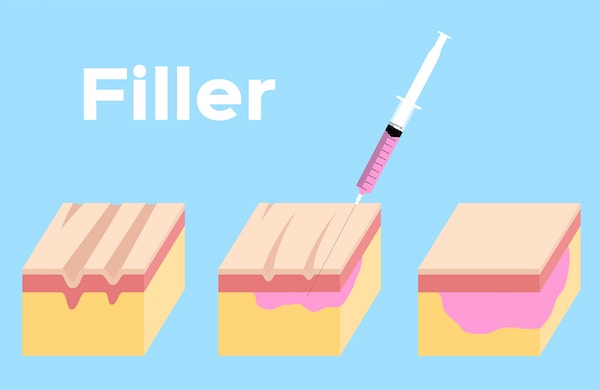What are the Differences between Fat Grafting and Dermal Fillers?
Both fat grafting and dermal fillers are types of skin rejuvenation techniques. They can be used to remove facial wrinkles, fine lines, deep creases and scars. They can also correct shadowed contours by filling in sunken regions such as the cheeks, temples and under the eyes that are caused by volume loss. Each of these skin imperfections can result from the natural process of aging and cause you to look older. Fat grafting and dermal fillers can improve your facial contours while providing smoother, rejuvenated skin. Furthermore, both procedures provide immediate results. So, what’s the difference between fat grafting and dermal fillers?
Defining the Two Treatments
 Fat grafting is a technique that uses your own fat to restore volume, plump up the skin and smooth facial lines. It is sometimes referred to as autologous fat grafting or autologous fat transfer since autologous means the injectable material comes from your own body. The procedure involves removing unwanted fat from an area of the body, such as the abdomen and hips or thighs, via liposuction and then purifying it. The fat is then injected into the problematic regions of the face to rejuvenate the overlaying skin. The fat that is removed, during fat transfer, is live tissue and will be integrated with the body’s vascular system to behave like the existing tissue.
Fat grafting is a technique that uses your own fat to restore volume, plump up the skin and smooth facial lines. It is sometimes referred to as autologous fat grafting or autologous fat transfer since autologous means the injectable material comes from your own body. The procedure involves removing unwanted fat from an area of the body, such as the abdomen and hips or thighs, via liposuction and then purifying it. The fat is then injected into the problematic regions of the face to rejuvenate the overlaying skin. The fat that is removed, during fat transfer, is live tissue and will be integrated with the body’s vascular system to behave like the existing tissue.- Dermal fillers are synthetic, thin, gel like substances that are manufactured in a lab and can be injected into or below the skin. Some types of dermal fillers include Restylane, Juvederm and Radiesse. Many of these fillers are made up of hyaluronic acid, which is naturally found in the body, so they are considered safe and biodegradable. Certain fillers may also include material which helps to promote collagen production as time passes.
Key Differences
While fat grafting and dermal fillers can provide the same results, there are some key differences that may help you decide which procedure is best for you.
- Fat grafting is a surgical procedure due to the liposuction portion but dermal fillers are just an injection that takes about 20 minutes
- Fat, which is removed from the body and purified, can be stored for up to a year and used for other cosmetic enhancements
- Liposuction, during fat grafting, can help to slim down areas of fat resistant to diet and exercise
- While dermal fillers are generally well tolerated in the body, there is a chance they will be rejected by the body or cause an infection
- Since fat comes from the patient’s own body, there is no risk of rejection and little to no risk of infection
- While the injections of both fat and fillers have little to no recovery or downtime, the liposuction portion of fat grafting has a 7 to 14 day recovery period
- Thin patients who do not have enough fat on the body for a transfer may not qualify for fat grafting but might benefit from dermal fillers
- Patients, who are not healthy enough for surgery, may be better suited for filler injections
- The results from fat grafting are long lasting
- Dermal fillers are temporary and only last between 6 to 18 months depending on the type of filler
SP
